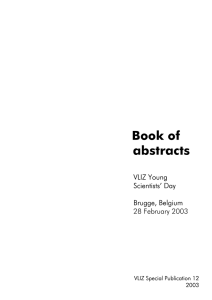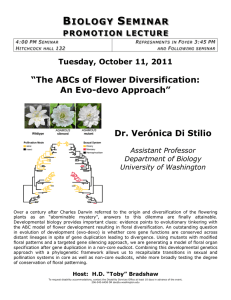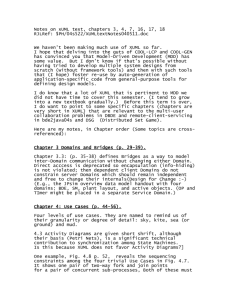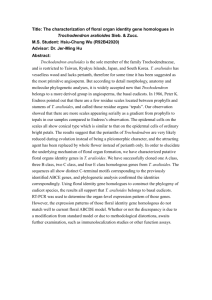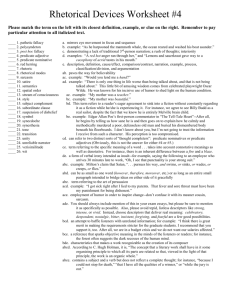Document 13718830
advertisement
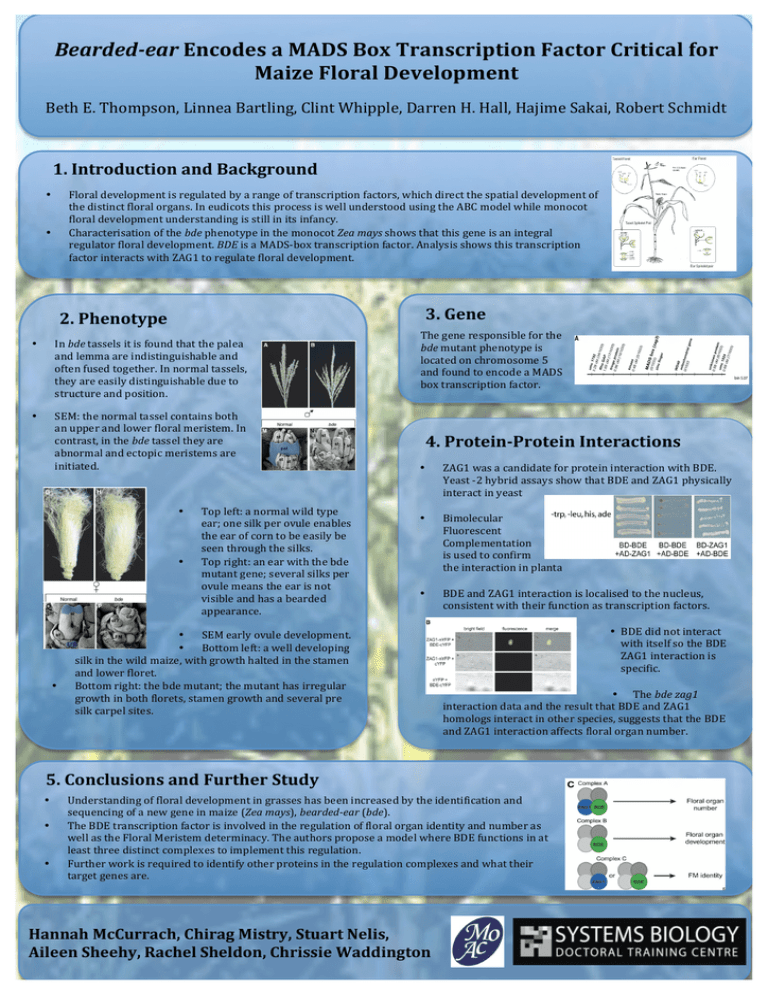
Bearded-­‐ear Encodes a MADS Box Transcription Factor Critical for Maize Floral Development Beth E. Thompson, Linnea Bartling, Clint Whipple, Darren H. Hall, Hajime Sakai, Robert Schmidt 1. Introduction and Background Floral development is regulated by a range of transcription factors, which direct the spatial development of the distinct floral organs. In eudicots this process is well understood using the ABC model while monocot floral development understanding is still in its infancy. Characterisation of the bde phenotype in the monocot Zea mays shows that this gene is an integral regulator floral development. BDE is a MADS-­‐box transcription factor. Analysis shows this transcription factor interacts with ZAG1 to regulate floral development. • • 2. Phenotype 3. Gene • In bde tassels it is found that the palea and lemma are indistinguishable and often fused together. In normal tassels, they are easily distinguishable due to structure and position. • SEM: the normal tassel contains both an upper and lower floral meristem. In contrast, in the bde tassel they are abnormal and ectopic meristems are initiated. The gene responsible for the bde mutant phenotype is located on chromosome 5 and found to encode a MADS box transcription factor. 4. Protein-­‐Protein Interactions • • • Top left: a normal wild type ear; one silk per ovule enables the ear of corn to be easily be seen through the silks. Top right: an ear with the bde mutant gene; several silks per ovule means the ear is not visible and has a bearded appearance. ZAG1 was a candidate for protein interaction with BDE. Yeast -­‐2 hybrid assays show that BDE and ZAG1 physically interact in yeast • Bimolecular Fluorescent Complementation is used to confirm the interaction in planta • BDE and ZAG1 interaction is localised to the nucleus, consistent with their function as transcription factors. • • SEM early ovule development. • Bottom left: a well developing silk in the wild maize, with growth halted in the stamen and lower floret. Bottom right: the bde mutant; the mutant has irregular growth in both florets, stamen growth and several pre silk carpel sites. • BDE did not interact with itself so the BDE ZAG1 interaction is specific. • The bde zag1 interaction data and the result that BDE and ZAG1 homologs interact in other species, suggests that the BDE and ZAG1 interaction affects floral organ number. 5. Conclusions and Further Study • • • Understanding of floral development in grasses has been increased by the identification and sequencing of a new gene in maize (Zea mays), bearded-­‐ear (bde). The BDE transcription factor is involved in the regulation of floral organ identity and number as well as the Floral Meristem determinacy. The authors propose a model where BDE functions in at least three distinct complexes to implement this regulation. Further work is required to identify other proteins in the regulation complexes and what their target genes are. Hannah McCurrach, Chirag Mistry, Stuart Nelis, Aileen Sheehy, Rachel Sheldon, Chrissie Waddington
